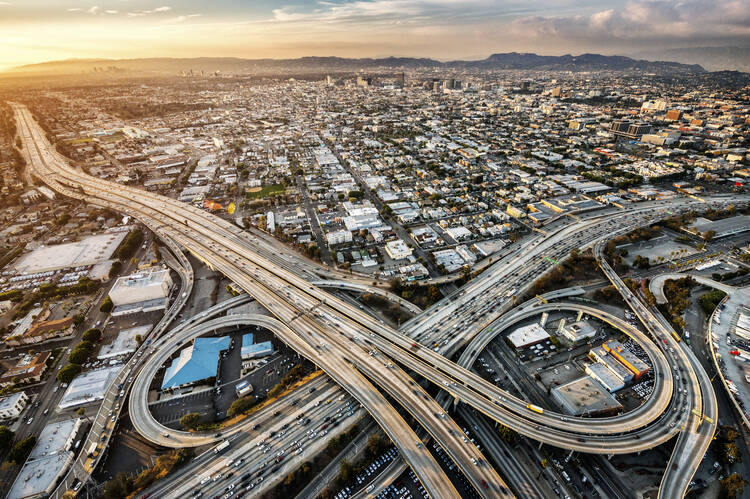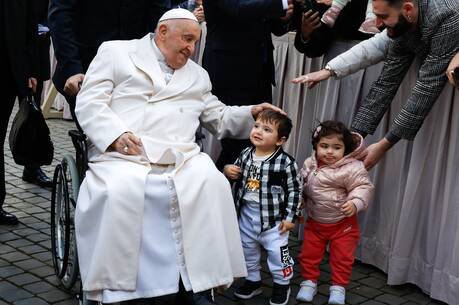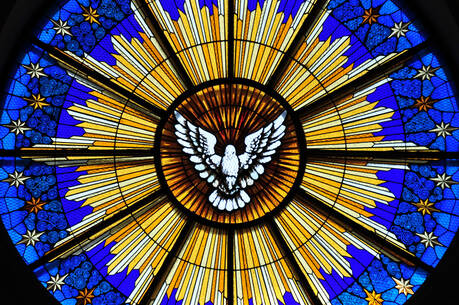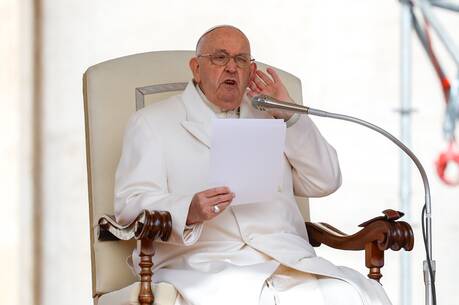Traffic is to Los Angeles what dangerous animals are to Australia—something visitors fixate on and locals mostly ignore. “Do you know it took me over an hour to get here?” tourists ask, eyes crazed and glassy after their first foray in the SoCal stop and go. “Also, why is Hollywood so gross?” (Seriously, Mayor Garcetti: Why?)
The issue of traffic congestion here is undeniable. According to a recent national study, Angelenos spend an average of 81 hours a year stuck in traffic, the worst rate in the country. (San Francisco and Washington, D.C., tied for second at 75 hours.) But among most locals the snarls barely rate a mention. Between a heavy medication of podcasts and satellite radio shows and a religious observance to Waze, the community-fed traffic and navigation app, Angelenos simply cope.
Still, faced with the growing consequences of climate change, like the state’s never-ending drought, the city’s overwhelming dependence on automobiles would seem a serious concern. Once upon a time the county had over 1,000 miles of electric streetcar lines. But a combination of rising costs and the machinations of car companies anxious to eliminate competition eventually destroyed the service.
Today L.A. County actually transports 1.3 million people a day by public transit, second in the United States only to New York, but with little of the efficiency or convenience offered in other major cities. Over the last decade the county has invested $9 billion into expanding its system. Yet over the same period, transit usage has diminished by more than 10 percent.
The problem, explains Brian Taylor, director of U.C.L.A.’s Institute of Transportation Studies, lies in the city’s history. Los Angeles is most often compared to places like New York or Chicago. But, Taylor points out, those cities developed their transit networks before the invention of the automobile. This led to denser urban areas that play to the strength of public transport—“moving a lot of people in the same direction at the same time.” As a result New York City today carries 38 percent of the entire country’s transit riders.
Los Angeles, on the other hand, like many other American cities and most suburbs, developed largely after World War II. As such it “grew up around the automobile,” says Taylor. Ready access to transportation was assumed; space, not density, was of highest value.
This difference complicates conversation around public transportation today in ways that are not always obvious. Even when the problem of congestion is acknowledged, the size and population spread of Los Angeles create significant obstacles to efficient transportation. “Public transit trips take about twice as long as driving,” notes Taylor. When a commute by car can already take upwards of an hour each way, for many people the public transit option is no option at all.
And simply investing more money in such a geographically challenged system has little impact. For those with the means, it doesn’t matter if the city schedules more buses or offers newer, safer trains if the travel time remains basically the same. Yet cities continue to push massive funding packages—including in Los Angeles a proposed $120 billion over the next 40 years—both because it appears to address the problem and because many erroneously think, How could more resources not help?
As Taylor sees it, rather than spreading transit resources over the entire city out of a desire to seem fair, Los Angeles should focus its efforts on areas and populations who actually need and use rapid transit services. “We’re spending a lot of money on new commuter-oriented services,” he explains, but “they aren’t returning a lot in ridership.”
But what about the congestion? What about all the cars? Taylor says they’re largely here to stay. “Private vehicles are likely to play a central role in mobility in all but the very densest cities in the country.”
If that’s the case, alongside the shiny new train line that links Santa Monica to downtown L.A.—but which takes as long to reach downtown as the old line did 60 years ago—county and state government should start thinking about public transit in broader terms. They might consider diverting some of their proposed billions to research and rebates on hybrids and electric cars.
Investing in longer National Public Radio programs couldn’t hurt, either.








